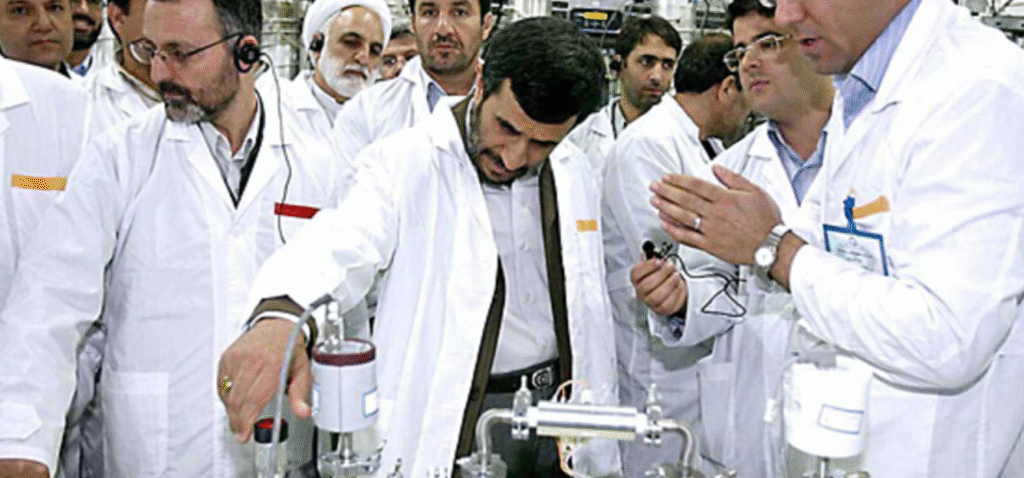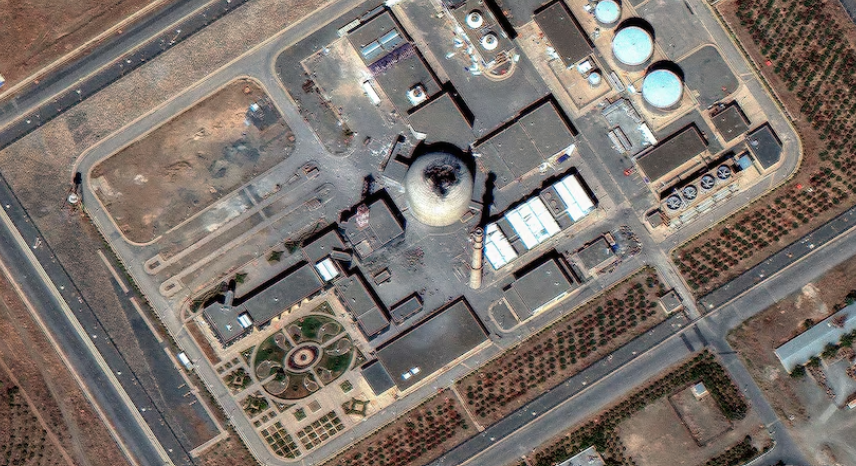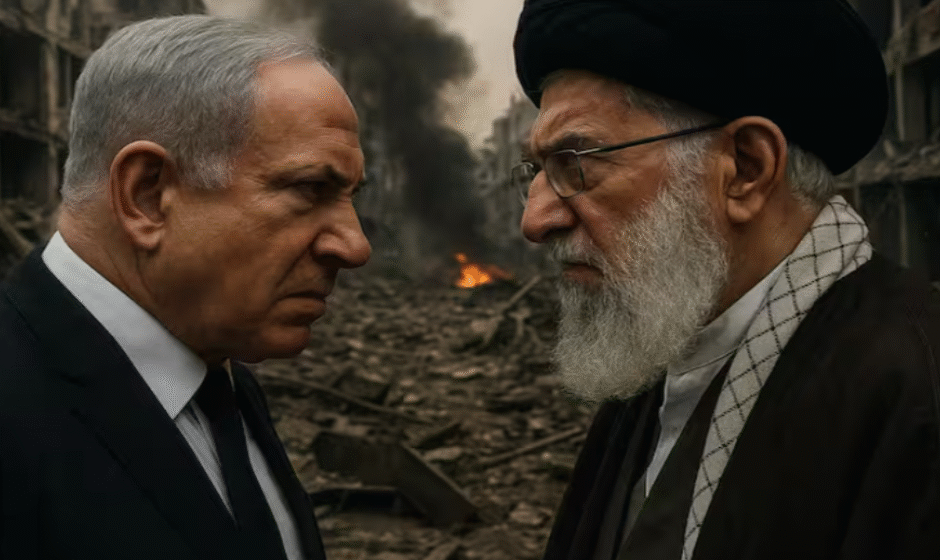The Middle East witnessed a seismic shift in the early hours of June 22, 2025, as U.S. B-2 Spirit stealth bombers unleashed 30,000-pound “bunker buster” bombs on Iran’s most fortified nuclear sites. The coordinated U.S.-Israeli operation targeting Fordo, Natanz, and Isfahan represents not merely a military escalation but a calculated gamble to redraw the region’s geopolitical map—one that has brought Iran’s theocratic regime to its most precarious moment since the 1979 revolution.
The Ultimatum and the Unleashing
The operation culminated weeks of escalating conflict that began with Israel’s June 13 surprise attacks on Iranian nuclear and military targets. As Iranian missiles struck Tel Aviv in retaliation, President Donald Trump issued a stark warning from the White House: “Iran must now agree to end this war. Remember, there are many targets left”. His address following the strikes framed the mission as total destruction of Iran’s nuclear enrichment capacity, declaring facilities “completely and totally obliterated” while threatening “tragedy for Iran far greater” if retaliation occurred.

Israeli Prime Minister Benjamin Netanyahu was unequivocal in his triumph: “From the beginning, I promised Iran’s nuclear facilities would be destroyed. This promise has been fulfilled”. Hailing the “perfect operational coordination” with Washington, Netanyahu positioned the assault as a historic pivot toward regional peace, echoing his long-standing mantra: “First comes strength, then comes peace”.
These actions starkly contrasted with Iran’s decades-long posture. Supreme Leader Ayatollah Ali Khamenei—now 86 and reportedly isolated in a decimated inner circle—had vowed weeks earlier that Iran would “not surrender” and would mete “irreparable damage” to any aggressor. His rhetoric echoed his foundational promise to erase Israel from the world map, a threat now meeting unprecedented counterforce.
Strategic Objectives Behind the Strikes:
| Actor | Primary Objective | Secondary Objective | Perceived Threat |
| Israel | Eliminate existential nuclear threat | Shatter IRGC command structure | 83.7% enriched uranium at Fordow |
| United States | Prevent nuclear proliferation | Restore deterrence after “wars of choice” | 5-day breakout time to bomb |
| Iran | Regime survival | Maintain “Axis of Resistance” | Israeli aerial supremacy & U.S. bunker busters |
The Anatomy of Annihilation
The strikes showcased terrifying precision:
- Fordo: Hidden 300 feet beneath a mountain, hit by GBU-57 Massive Ordnance Penetrators (MOPs) dropped from B-2 bombers capable of piercing 200 feet of earth. This site held uranium enriched to 83.7%—near weapons-grade.
- Natanz: Electrical infrastructure destroyed, cutting power to underground centrifuges spinning at “speed of light.” Satellite imagery confirmed above-ground structures demolished, potentially causing centrifuges to catastrophically fail.
- Isfahan: Four critical buildings damaged at Iran’s largest nuclear research complex, though Iranian officials downplayed impacts, claiming equipment had been moved pre-emptively.
The International Atomic Energy Agency (IAEA) confirmed “no increase in off-site radiation levels,” alleviating fears of Chernobyl-style contamination. Experts had previously noted uranium’s low radioactivity hazard due to its 700-million-year half-life, though chemical risks from uranium hexafluoride releases remained contained.
The Regime’s Reckoning

With the Islamic Revolutionary Guard Corps (IRGC) decimated—commander Hossein Salami and aerospace chief Amir Ali Hajizadeh killed—Khamenei’s inner circle has been hollowed out. Sources describe an “extremely dangerous” risk of miscalculation as the supreme leader operates with diminished counsel. This vulnerability raises the existential question: Could war trigger regime change?
Three Scenarios for Iran’s Political Future:
- Theocratic Resilience: Despite losses, the regime retains control through Khamenei’s son Mojtaba and remaining IRGC networks. As one regional official noted: “Real power resides with Mojtaba and the IRGC, which remains the regime’s spine”.
- Pragmatic Transformation: Pressure accelerates a shift toward nationalist-technocratic rule. Figures like President Masoud Pezeshkian or former nuclear negotiator Ali Shamkhani could steer Iran toward Saudi-style realpolitik—prioritizing economic survival over revolutionary zeal.
- Collapse and Chaos: A power vacuum triggers ethnic fragmentation among Azeris, Kurds, Baluchis, and Arabs. As Middle East Institute’s Alex Vatanka warned: “A destabilized Iran could ignite unrest from Azerbaijan to Pakistan”.
Opposition figures like exiled sociologist Majid Golpour note the populace recognizes regime “inefficiency,” yet opposition remains fragmented and leaderless. With 40,000 U.S. troops in the region, America holds latent power to influence outcomes, though Trump explicitly denied pursuing regime change.
Global Chessboard: Motives and Reactions
- Iran’s Gambit: The regime pursued nuclear capability as both deterrent and leverage against Western powers. With its “Axis of Resistance” shattered—Hezbollah weakened, Syria’s Assad fallen, Hamas defeated—the nuclear program represented Khamenei’s last strategic asset.
- Israel’s Existential Calculus: Netanyahu’s government acted on intelligence suggesting Iran was “moving forward to a nuclear bomb” at Isfahan. With breakout time potentially down to days, Israel viewed destruction as non-negotiable.
- U.S. Power Play: Trump balanced non-interventionist rhetoric with neoconservative action. By using B-2s from Missouri and submarine-launched missiles, he projected global reach while avoiding ground troops. The strikes fulfilled his March repudiation of intelligence director Tulsi Gabbard’s assessment that Iran wasn’t building a weapon.
- Global Reactions: European powers scrambled to resurrect diplomacy, with Germany, France, and Britain holding emergency talks with Iran. Saudi Arabia expressed “great concern” but tacitly benefits from Iran’s weakening. Russia and China—nominally Iranian allies—remained conspicuously silent, underscoring Tehran’s isolation.
Pathways from the Rubble
The conflict presents both peril and opportunity. As Atlantic Council expert Daniel Shapiro noted, this “pivotal moment” could enable cease-fires in Gaza, Israeli – Saudi normalization, and Iran’s reintegration—if handled deftly.
Diplomatic off-ramps exist but demand concessions:
- Nuclear Capability Surrender: Iran permanently abandons enrichment in exchange for sanctions relief and security guarantees.
- Proxy Disarmament: Tehran withdraws support for regional militias, reducing tensions.
- Regional Security Framework: Gulf states, Israel, and global powers establish new deterrence architecture.
The alternative—Iranian retaliation through asymmetric warfare or nuclear reconstitution—risks catastrophic escalation. As former U.S. envoy Dennis Ross observed: “The next move belongs to Trump… but the cost to [Iran] is going to be high”.
The Inescapable Equation
The smoking ruins of Fordo and Natanz represent more than shattered centrifuges; they mark the potential demise of a revolutionary ideology that has defined Iran for nearly half a century. Khamenei’s dream of an Islamic republic challenging Western hegemony lies buried under mountains of rubble, while Israel has demonstrated unprecedented reach.
Yet victory remains fragile. Iran retains ballistic missiles, cyber capabilities, and proxy networks. The regime may yet lash out in desperation or collapse into chaos that engulfs the region. As the dust settles, leaders face a historic choice: seize this moment to forge a new security architecture anchored in diplomacy or succumb to the cycle of violence that has long haunted the Middle East. The rubble of revolution now lies at a crossroads—between peace forged through statesmanship, or tragedy born of vengeance.



